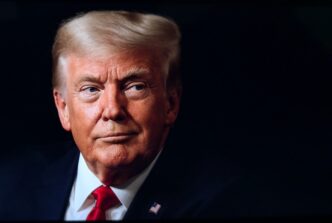Executive Summary
The Story So Far
Why This Matters
Who Thinks What?
Bitcoin recently experienced significant volatility, hitting a new all-time high of $124,000 on August 14 before retreating to $115,000 less than a week later, prompting uncertainty among crypto traders about its short-term trajectory. This fluctuation is largely attributed to shifts in the U.S. economic outlook, the dynamics of institutional adoption via spot Bitcoin exchange-traded funds (ETFs), and evolving narratives around potential U.S. government Bitcoin purchases.
Macroeconomic Headwinds
Once considered uncorrelated, Bitcoin has increasingly begun to respond to macroeconomic factors, similar to traditional assets. The recent dip from $124,000 to $115,000 coincided with hotter-than-expected inflation data, which spooked traders.
Concerns arose that persistent inflation might deter the Federal Reserve from cutting interest rates. Historically, rate cuts tend to stimulate the crypto market by encouraging investment in riskier, more speculative assets, including cryptocurrencies like Bitcoin.
Institutional Adoption Dynamics
The launch of spot Bitcoin ETFs in January 2024 has significantly eased the process for institutional investors to integrate Bitcoin into their portfolios. Consequently, market participants closely monitor the inflows and outflows of these ETFs as an indicator of institutional sentiment.
Net inflows are generally seen as a bullish signal, indicating increased institutional exposure and allocation to Bitcoin. However, the article suggests that when Bitcoin’s price stalls or declines, large institutional investors may be compelled to liquidate holdings as part of broader portfolio rebalancing, a factor potentially contributing to the current price pullback.
U.S. Government’s Bitcoin Stance
Earlier in the year, a prominent narrative centered on the potential establishment of a U.S. Strategic Bitcoin Reserve. A White House executive order in March granted the U.S. Treasury authority to consolidate government Bitcoin holdings, hinting at possible future purchases if done in a “budget-neutral” manner.
This development fueled speculation of a large-scale U.S. government Bitcoin buying spree, which some believed would trigger a global “Bitcoin arms race” and significantly boost its value. The article notes that ideas for budget-neutral funding included using DOGE savings or new tariff revenue.
However, U.S. Treasury Secretary Scott Bessent publicly stated in mid-August that the government has no immediate plans to acquire Bitcoin. Despite this, he did leave open the possibility of future purchases.
Looking Ahead
Historically, Bitcoin tends to exhibit weaker performance in August and September before often embarking on a significant year-end rally. This historical pattern suggests that the current pullback might align with typical seasonal trends.
According to prediction markets, there remains a 37% chance that Bitcoin could reach $150,000 by the end of the year. For investors comfortable with cryptocurrency’s inherent volatility, any price dip could be perceived as a potential opportunity to buy.








